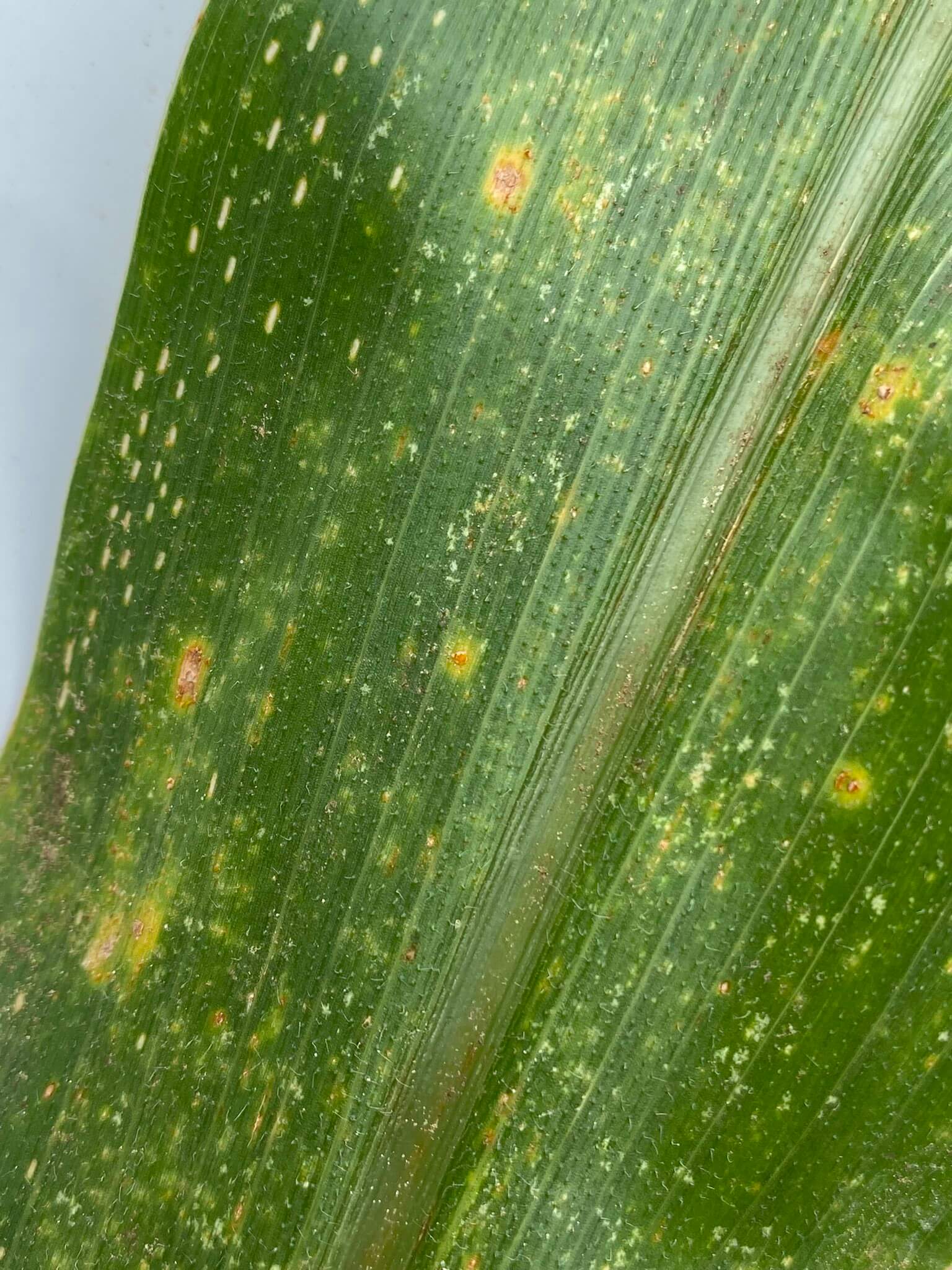
The first cases of southern corn rust (Puccinia polysora) for the 2023 growing season were discovered on Tuesday, June 20, and Wednesday, June 21, in Clinch and Grady counties along the Georgia-Florida line. University of Georgia Cooperative Extension experts are encouraging producers to be diligent in scouting for the fast-spreading disease among their corn crops.
“June 21 is about two weeks later than we typically find it,” said Bob Kemerait, a professor of plant pathology with the University of Georgia College of Agricultural and Environmental Sciences.
Citing information from UGA agricultural climatologist Pam Knox, Kemerait indicated that the direction of prevailing winds in late spring and early summer, in combination with cooler-than-normal temperatures this spring, may have delayed the spread into Georgia this year.
“Hunting for southern rust and not finding it allowed growers to delay fungicide applications by at least two weeks, if they so chose to do so,” Kemerait said. “Two weeks also allowed a corn crop to inch closer to the ‘hard dough’ stage where southern rust becomes much less important.”
All corn producers should carefully inspect their crops and spray as needed to control southern corn rust. Growers with corn at the stage where it becomes more susceptible — when the corn starts to tassel — should recognize the potential for infection. Without treatment with antifungal agents, the disease can cause significant yield loss.
Kemerait credited detection to a network of corn sentinel plots throughout south Georgia that are sponsored by the Georgia Agricultural Commodity Commission for Corn and the efforts of private agricultural consultants and scouts through the IPM Pest Information Platform for Extension and Education (ipmPIPE), a pest mapping and forecasting system that was developed by the U.S. Department of Agriculture’s National Institute for Food and Agriculture (NIFA) and its land-grant partner universities, including UGA.
“In the first finds in 2023, one in Georgia and one in Florida, it has been a consultant who has found southern rust. In each case the consultant reached out to Extension at UGA and the University of Florida for confirmation of the disease,” he said. “Now that we know southern rust is near Marianna, Florida, and in Clinch County, all corn growers in Georgia's southern tier of counties should pay close attention. The weather is here, the crop is at the right stage and we know where the pathogen is. Be prepared.”
Corn was eighth among the top 10 commodities in Georgia in 2021, with a value of $509.1 million, according to the 2023 Ag Snapshots produced by the UGA Center for Agribusiness and Economic Development.
To track where corn rust been confirmed, updated information on cases of southern corn rust in Georgia is available through UGA Extension. Follow plant pathologist Kemerait at twitter.com/bobkemerait.






